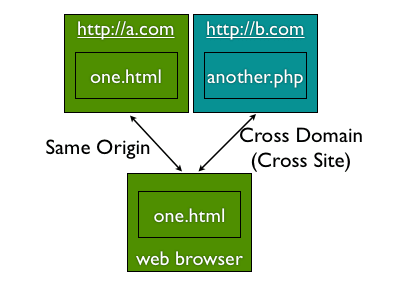Nowadays is pretty common to transfer data between web applications via Web Services to clients that require information on different interfaces such as REST, XMLRPC, JSON, JSON-RPC, SOAP, and others.
Almost all sites today are built using JavaScript, generating AJAX calls with XMLHttpRequest mechanism to get information from external sites. To enable this kind of communication is necessary to implement “cross-domain” requests would otherwise be forbidden by web browsers, per the same origin security policy.
Let's imagine the following scenery: we have a frontend application using the domain http://a.com and this application wants to use data provided by a backend site located in domain http://b.com. For security, this type of communication is blocked and the end user will be only able to get the information from http://a.com, this scenario is exemplified in the following image.

To enable this kind of communication is required that your backend server (http//b.com) returns the specific HTTP Headers to enable CORS communication. Below you can see an example of HTTP Header required.
Access-Control-Allow-Credentials:true
Access-Control-Allow-Headers:X-CSRF-Token
Access-Control-Allow-Methods:POST,ADD,GET,PUT,DELETE,OPTIONS
Access-Control-Allow-Origin:http://localhost:8080The header Access-Control-Allow-Credentials is only used if your request requires some kind of authentication. You can read more information about all HTTP Headers at Access Controls - CORS.